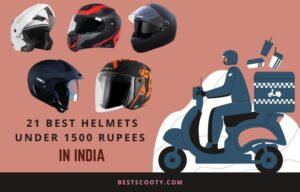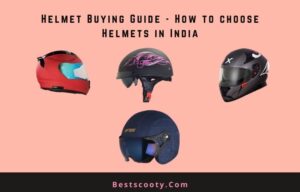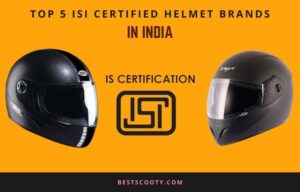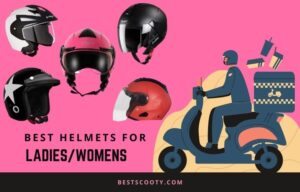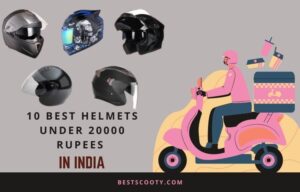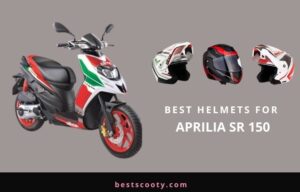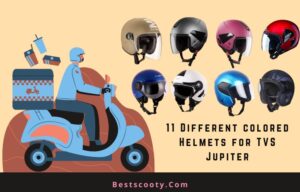Helmet buying guide in India - How to Choose?
Helmets are importantly used for individuals’ safety while bike riding and saving a life during any accidents. So, there are certain necessities and requirements helmets have to meet mandatorily.
Helmets have different features within themselves like Full face, semi face-covering helmets. Not only on how they cover the face, but also on the material, space for ventilation, and many other factors, etc.
Depending on the individuals how they use the bike, helmets will have the specifications needed. For instance, bikes are used for normal and routine uses like going for work, or for professional reasons like racing, etc.,
For routine uses, helmets will have standard provisions like face fitting adjustment feature, face-covering material, inner material for a soft feel.
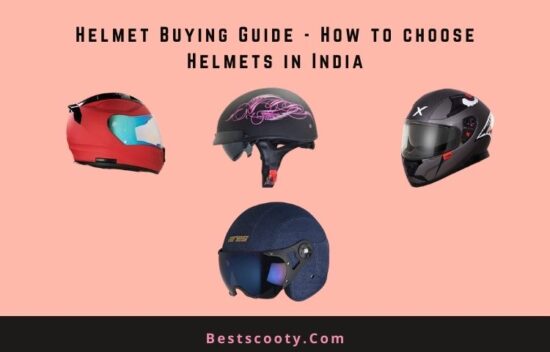
Things to Consider before buying Helmets in India
There are other things to note like certifications and material of build. Here are some of the common things to be noted before buying a helmet.
1. Helmet Types
There are different types of helmets. The type of vehicle can help you to determine which helmet suits you best. There are three different types of helmets they are:
- Half Face:
Half face helmets cover your head region and back part of your skull. These do not cover your face. Protection is lesser but it will be sufficient for casual bike riders or those who use for daily commuting.
- Open face:
Open face helmets as their name represents, they do not cover your face. But it provides better protection compared to half Face helmets. These helmets are best suited if you like to leave your face visible.
- Full face:
Full face helmets are the most protective type of helmets. These are best suited for bikers and racers. The chin guard gives additional protection. It completely protects your complete face and jaws.
2. Pricing
Helmets protect your life so it is important to spend a little wisely than to repent. If you want to buy a good quality helmet you must be ready to spend a little extra. Helmets will last for years so it is important to buy a good quality one rather than buying a less priced low-quality ones. Helmets come with expiry make sure to replace them once they expire.
3. Certifications
It is important to buy helmets with proper certifications. You need to check if your helmet brand has an ISI certification as a minimum. These certifications ensure safety measures and tests that are undergone by the helmets during manufacture. It is compulsory to buy an ISI branded helmet in India else you might have to pay a fine.
The other international certifications are as below:
- SNELL:
If you are buying a helmet for racing then it is a must to have a Snell certified helmet. This an international certification for racing helmets.
- DOT:
This certification is most commonly used in the USA. There are many tests followed to get DOT certification for a helmet. The most important tests include impact tests, penetration tests, and crack resistance test.
- ECE:
This is the most commonly used certification in Europe. They are made to meet high standards and racing environments. These helmets are approved in more than 50 countries across Europe.
4. Size
It is important to buy the right sized helmet. Several things need to be noted while measuring your size. Measure your size by keeping the tape one inch above your eyebrows. Get your size measured and check with your helmet sizing accordingly.
Every person’s head size will be different so it is important to know your head size and then choose your helmet accordingly. Head shapes can be classified into three they are round oval, Long oval, and intermediate oval.
- Round oval:
This type of helmets is suitable for people with wider heads and narrower sides.
- Intermediate oval:
People with round head can go for this type of helmets.
- Long oval:
People having an elongated face or oval head can choose this type of helmet. It is more suitable if you have an oval face and narrower ears.
Helmets are not free size do not buy if a seller says that they are one size. The size of helmets differs from one brand to another.
How to measure your helmet size?
Buying a right-sized helmet is important to ensure your safety. If your helmet does not fit right or if it is loosed it might not protect you during a collision. So, it is important to buy a helmet that gives you a snug fit. While buying a helmet it should fit tightly there should not be any finger spaces.
- Use a measuring tape and keep it half an inch above your eyebrows.
- Cover your full head circumference.
- Check the size with the sizing chart of helmets.
- Try once before buying your helmet.
- If your fingers can fit in then it is not the right size.
You need to wear the right helmet to ensure safety as a loosely fitting helmet might come off easily in a time of the accident and could hurt you further.
Some other factors to be noted on helmet:
Some other factors are to be noted while buying a helmet they are:
- Weight: Average weight of a good helmet should be between 1400 to 1600 grams. If it is heavier then it might cause strain to your neck.
- Liner: The liner must be absorbent material to absorb sweat.
- Outer shell: The outer shell of the helmet is the most important thing as it will be the first thing that will get an impact during a collision.
- Construction: A well-constructed helmet should have hard outer covering, absorbent lining, and good retention.
- Padding: The padding material should be absorbent and if it is washable then it is an added advantage.
- Noise cancellation: noise cancellation is important if you are driving for long distances or racing.
- Chinstrap: the chin strap acts as an extra protective layer. It ensures that your helmet is in position and does not move or get removed.
- Visor: A visor is nothing but the front guard that is transparent. It is good if it is UV resistant and fog-resistant. AS you may not be able to look properly in case of extreme climatic conditions.
How to properly wash the helmet?
It is important to wash your helmet at regular intervals to keep it clean. If not done it will be the breeding place for germs and dirt. As it will be accumulated with sweat and dirt deposited.
- Use mild soap while cleaning inner material. You can use baby shampoo.
- Use a warm water-soaked towel to wipe off the soap.
- Use a soft cloth to clean the soap.
- Use cotton swabs for cleaning vents and holes.
- Apply the minimum pressure of the visor and other parts.
- Air dry your helmet inner materials.
- Lubricate moving parts with oil.
- Wear a cloth or skull cap before wearing a helmet to avoid sweat staining.



